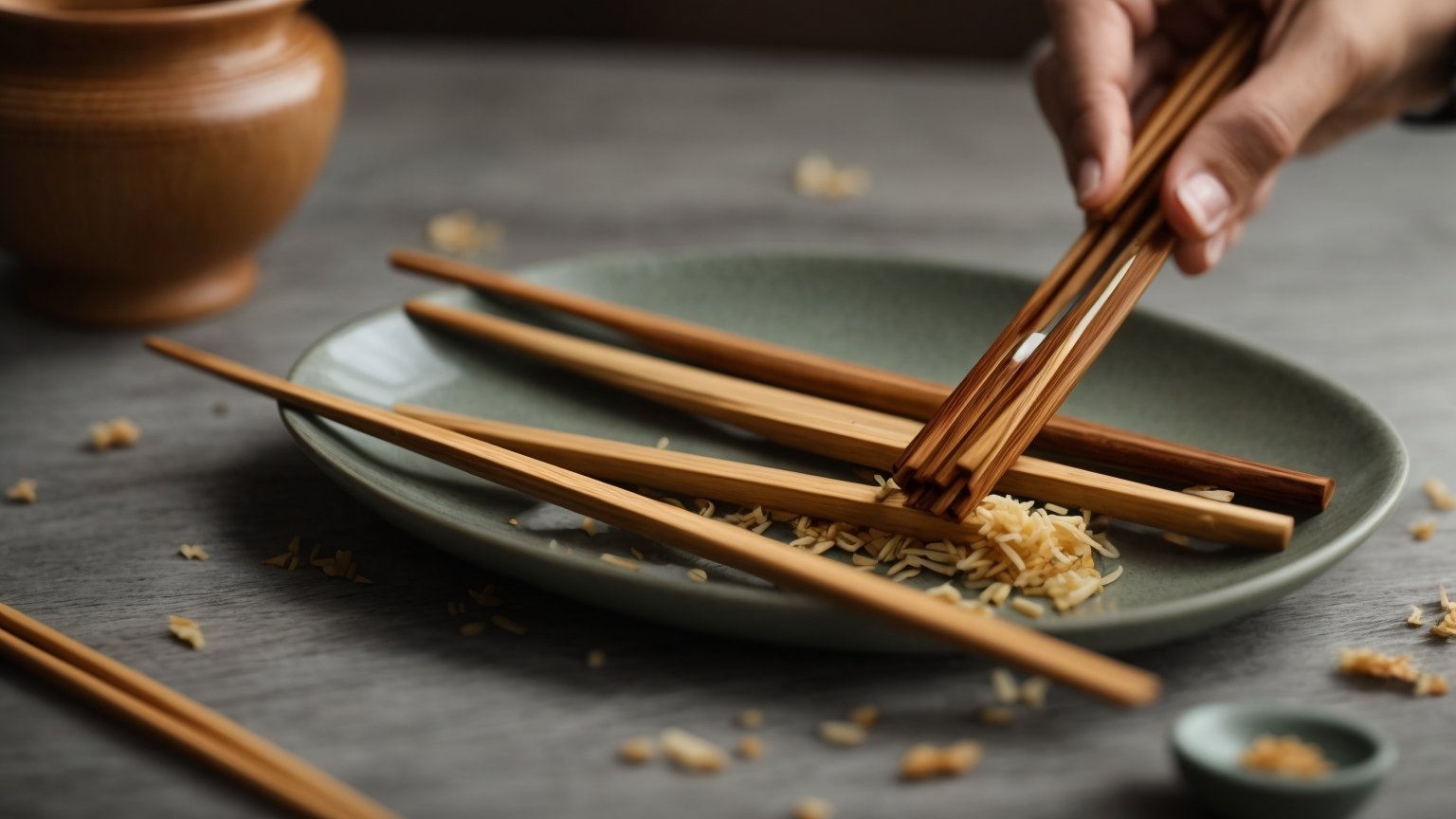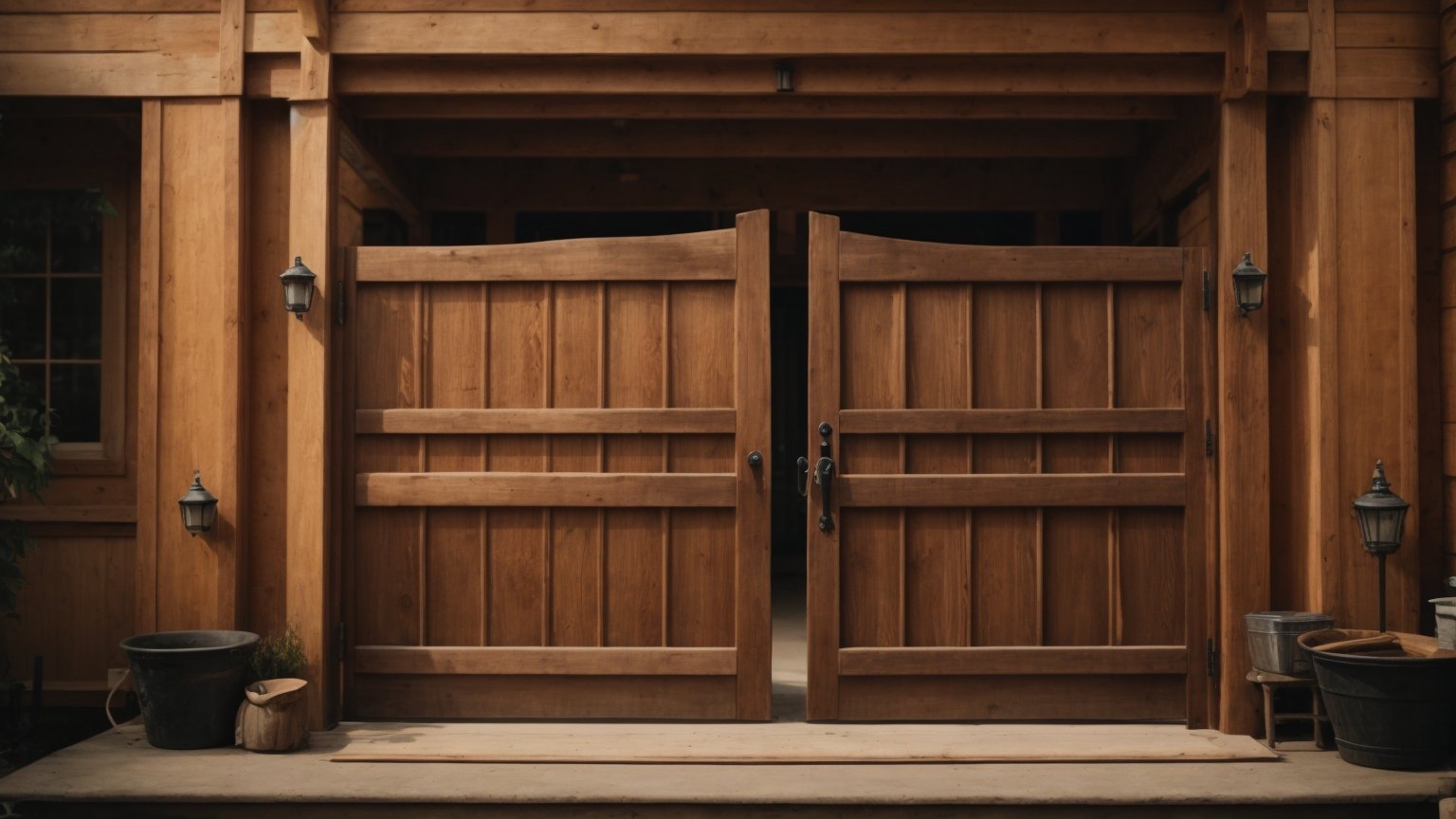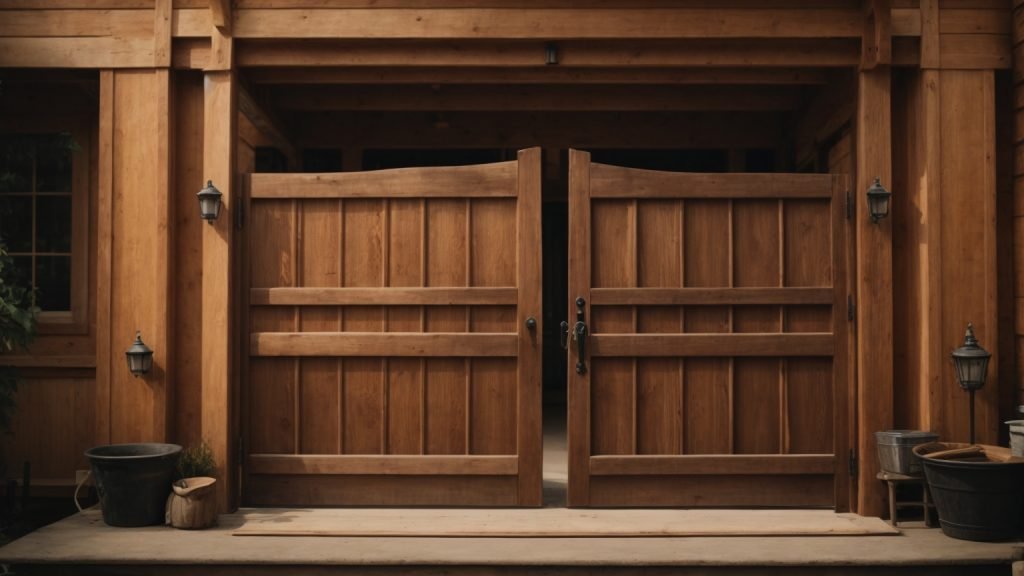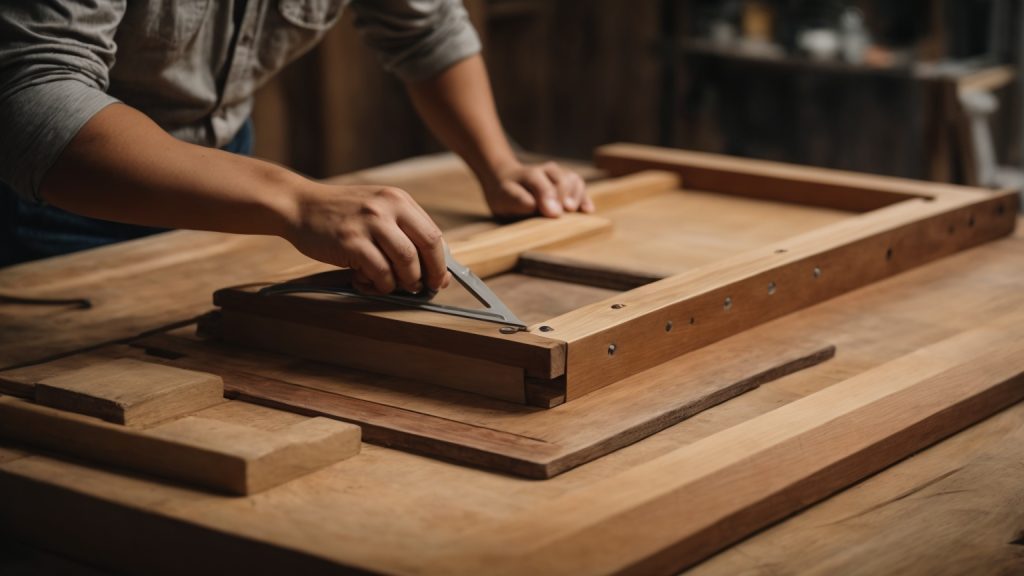Are you tired of using disposable chopsticks every time you order takeout? Wooden chopsticks are a great alternative, but they require proper cleaning to ensure they are safe to use. In this article, we will guide you through the steps of cleaning wooden chopsticks effectively.
Cleaning wooden chopsticks might seem like a daunting task, but it’s actually quite simple. With just a few basic tools and some easy-to-follow steps, you can keep your chopsticks in top condition for longer. In the following paragraphs, we will provide you with some tips and tricks to make the process as quick and painless as possible. So, if you want to learn how to clean wooden chopsticks like a pro, keep reading!
Understanding the Importance of Cleaning Wooden Chopsticks
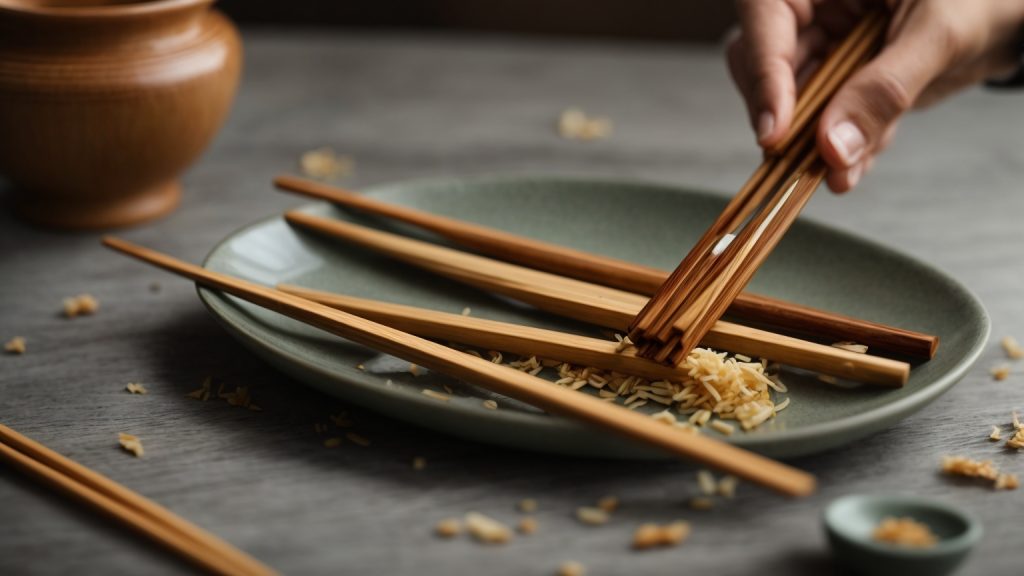
If you’re a fan of Asian cuisine, you’re likely familiar with the use of chopsticks. Wooden chopsticks are a popular choice, but it’s essential to keep them clean. Here’s why:
Prevent the Spread of Germs
When you use chopsticks, they come into contact with your mouth and the food you’re eating. This means that bacteria can build up on the surface of the chopsticks. If you don’t clean them properly, you could be spreading germs and bacteria every time you use them. Cleaning your chopsticks after each use helps prevent the spread of germs and keeps them hygienic for future use.
Ensure Longevity
Wooden chopsticks are a sustainable alternative to disposable chopsticks, but they do require proper care to ensure longevity. Regular cleaning helps prevent damage to the wood and ensures that they last longer. If you neglect to clean your chopsticks, they may become stained, warped, or even moldy.
Maintain the Flavor of Your Food
Dirty chopsticks can affect the taste of your food. Leftover food particles on the chopsticks can mix with your next meal, altering the flavor. Keeping your chopsticks clean ensures that you can enjoy the full flavor of your food without any unwanted additions.
In summary, cleaning your wooden chopsticks is essential for maintaining hygiene, ensuring longevity, and preserving the flavor of your food.
Materials Needed for Cleaning Wooden Chopsticks
Cleaning wooden chopsticks is an easy process that requires a few basic materials. These materials are gentle and will not cause any damage to the chopsticks, helping to keep them in top condition for longer. Here are the materials you will need:
Soft Cloth
A soft cloth is essential for cleaning wooden chopsticks. It is gentle and will not scratch or damage the wood. You can use a microfiber cloth or any other soft cloth that you have at home.
Warm Water
Warm water is necessary for cleaning wooden chopsticks. It helps to loosen any food particles or dirt that may be stuck on the chopsticks. You can use tap water or boiled water that has been cooled down.
Mild Dish Soap
Mild dish soap is useful for cleaning wooden chopsticks. It helps to remove any grease or oil that may be on the chopsticks. You can use any mild dish soap that you have at home.
Soft-Bristled Brush
A soft-bristled brush is optional but can be helpful for cleaning wooden chopsticks. It can help to remove any stubborn food particles or dirt that may be stuck on the chopsticks. You can use a toothbrush or any other soft-bristled brush that you have at home.
Using these materials, you can effectively clean your wooden chopsticks and keep them in top condition for longer.
Step-by-Step Guide on How to Clean Wooden Chopsticks
Cleaning wooden chopsticks can be a bit tricky, but with the right tools and techniques, you can keep them clean and hygienic. Here is a step-by-step guide on how to clean wooden chopsticks:
Preparing the Chopsticks
Before cleaning your wooden chopsticks, it is important to prepare them properly. Here are the steps to follow:
- Remove any food particles: Rinse the chopsticks under warm water to remove any food particles or debris.
- Soak the chopsticks: Fill a sink or bowl with warm water and add a few drops of mild dish soap. Soak the chopsticks in the soapy water for a few minutes to loosen any dirt or stains.
- Use a soft-bristled brush: Use a soft-bristled brush to gently scrub the chopsticks, paying special attention to any stained or dirty areas. Avoid using abrasive sponges or scouring pads, as these can damage the wood.
Cleaning the Chopsticks
Once you have prepared the chopsticks, it is time to clean them. Here are the steps to follow:
- Wash the chopsticks: Rinse the chopsticks under running water to remove any soap residue.
- Use a clean cloth: Use a clean, soft cloth to dry the chopsticks. Avoid using paper towels, as they can leave behind fibers that can get stuck to the wood.
- Apply oil: If your wooden chopsticks are looking dull or dry, you can apply a small amount of oil to them. Use a clean cloth to apply a thin layer of food-grade oil to the chopsticks, and then wipe off any excess.
Rinsing and Drying
After cleaning your wooden chopsticks, it is important to rinse and dry them properly. Here are the steps to follow:
- Rinse the chopsticks: Rinse the chopsticks under running water to remove any remaining oil or residue.
- Dry the chopsticks: Use a clean, soft cloth to dry the chopsticks thoroughly. Make sure to remove any excess moisture to prevent mold or mildew growth.
- Store the chopsticks: Once the chopsticks are completely dry, store them in a clean, dry place. Avoid storing them in a damp or humid environment, as this can cause them to warp or crack.
By following these simple steps, you can keep your wooden chopsticks clean and hygienic, ensuring that they last for years to come.
Tips to Maintain Wooden Chopsticks

If you want to keep your wooden chopsticks in top condition, there are a few things you can do to maintain them properly. Here are some tips to help you take care of your wooden chopsticks and extend their lifespan.
Proper Storage
Storing your wooden chopsticks properly is essential to maintain their quality. Here are some tips to keep in mind:
- Store your chopsticks in a dry place to prevent mold growth.
- Keep them away from direct sunlight to avoid discoloration.
- Avoid storing them in airtight containers to prevent moisture buildup.
Regular Cleaning
Cleaning your wooden chopsticks regularly is important to prevent bacteria growth and maintain their quality. Here are some tips to clean your chopsticks properly:
- Rinse them under lukewarm water to remove food particles and dirt.
- Use a soft-bristled brush to gently scrub away any residue.
- Avoid using harsh detergents or abrasive sponges, as these can damage the wood.
- Dry them immediately after cleaning to prevent moisture buildup.
Avoiding Dishwasher
Wooden chopsticks should never be washed in a dishwasher. The high temperature and strong detergents can damage the wood and cause them to warp or crack. Instead, follow the steps above to clean your chopsticks by hand.
By following these tips, you can maintain the quality of your wooden chopsticks and enjoy using them for years to come.
Common Mistakes to Avoid While Cleaning Wooden Chopsticks
Cleaning wooden chopsticks may seem like a simple task, but there are a few common mistakes that people make that can damage the chopsticks or make them unsafe to use. Here are some mistakes to avoid when cleaning your wooden chopsticks:
Mistake #1: Soaking Wooden Chopsticks for Too Long
Soaking wooden chopsticks in water for an extended period can cause them to warp or crack. It is recommended to only soak them for a few minutes before cleaning them with a soft-bristled brush.
Mistake #2: Using Harsh Detergents or Abrasive Materials
Using harsh detergents or abrasive materials such as steel wool or scouring pads can scratch or damage the surface of the chopsticks. It is best to use a mild dish soap and a soft-bristled brush to clean them.
Mistake #3: Not Drying the Chopsticks Completely
Leaving your wooden chopsticks wet can cause them to develop mold or bacteria, making them unsafe to use. After cleaning them, be sure to pat them dry with a soft cloth and allow them to air dry completely before storing them.
Mistake #4: Not Storing the Chopsticks Properly
Storing your wooden chopsticks in a damp or humid environment can cause them to absorb moisture and warp. It is best to store them in a dry, cool place, such as a utensil holder or a drawer.
By avoiding these common mistakes, you can ensure that your wooden chopsticks remain clean, safe, and in good condition for many uses to come.
Benefits of Using and Cleaning Wooden Chopsticks
Using and cleaning wooden chopsticks can offer several benefits that you may not have considered before. Here are some of the benefits of using and cleaning wooden chopsticks:
Eco-friendly
One of the most significant benefits of using wooden chopsticks is that they are eco-friendly. Unlike disposable chopsticks, wooden chopsticks are reusable and can last for years with proper care. By using wooden chopsticks, you can reduce the amount of waste generated by disposable chopsticks, which can be harmful to the environment.
Hygienic
Wooden chopsticks are easy to clean and sanitize, which makes them more hygienic compared to other materials. Proper cleaning and maintenance can help remove any bacteria or dirt that may be present on the surface of the chopsticks, ensuring that they are safe to use for your next meal.
Versatile
Wooden chopsticks are versatile and can be used for a variety of dishes, including noodles, sushi, and stir-fry. They are also suitable for use with different types of cuisines, such as Japanese, Chinese, and Korean.
Comfortable to Use
Wooden chopsticks are lightweight and comfortable to hold, making them an excellent choice for people of all ages. Unlike metal chopsticks, wooden chopsticks do not conduct heat, which means that you can use them to eat hot dishes without burning your fingers.
Affordable
Wooden chopsticks are affordable and widely available, making them an excellent choice for people on a budget. They are also easy to find at most grocery stores or online retailers, which means that you can easily replace them if needed.
By using and cleaning wooden chopsticks, you can enjoy these benefits and more. With proper care and maintenance, your wooden chopsticks can last for years, making them a sustainable and cost-effective choice for your dining needs.
